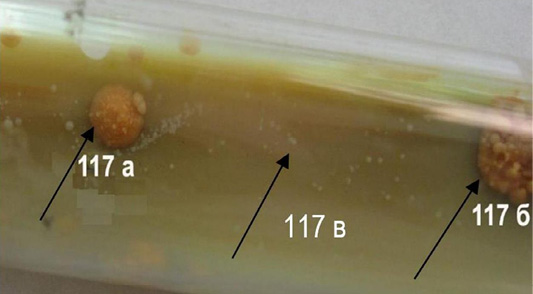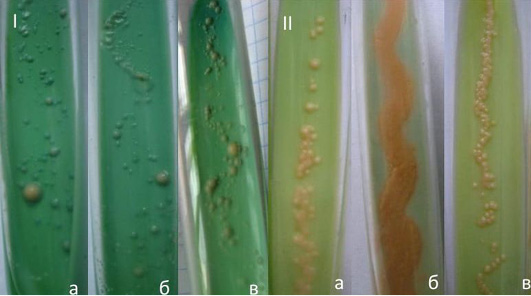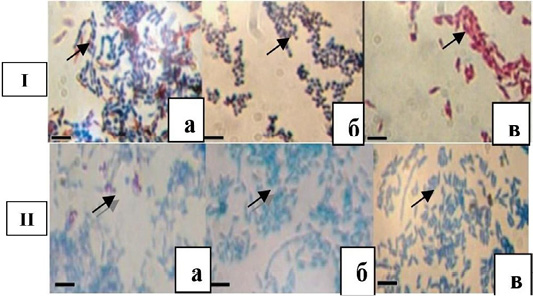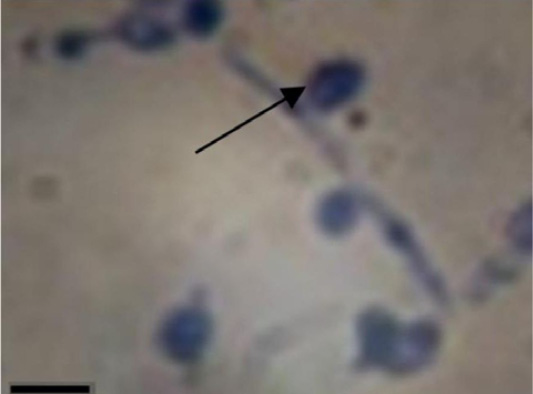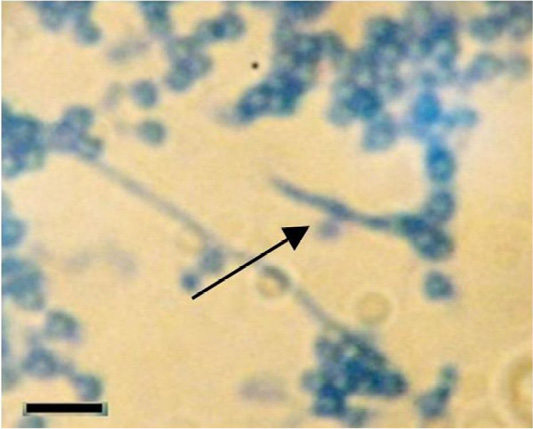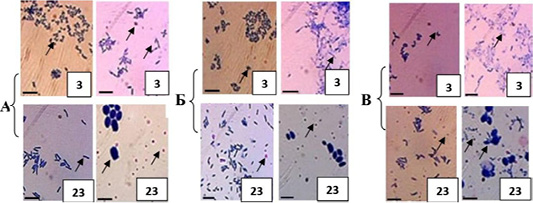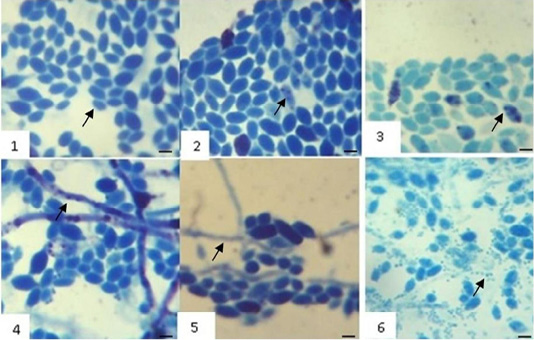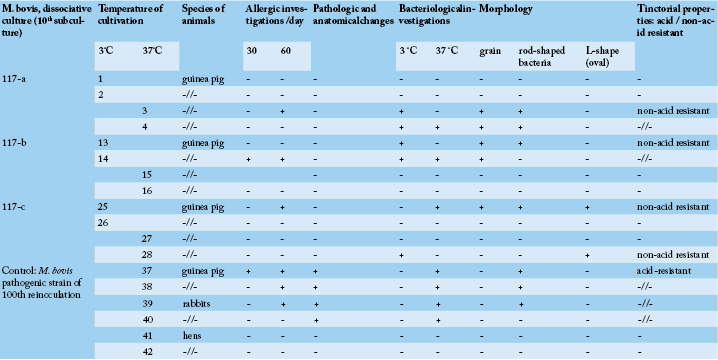Advances in Animal and Veterinary Sciences
Colonies M. bovis of the first generation, cultivated at a temperature of 3°C (117a, 117b, 117c).
Culture M. bovis of dissociative forms a passage 117th, that has been formed at a temperature of 3°С: I-two weeks, II-two to four weeks, the second generation (a, b, c).
Dissociative forms M. bovis 117th subculture of the first (1) and the second (II) generations. Bar = 10 microns (a, b, c).
M. bovis of dissociative forms 117-b (10th generation), cultivated at temperature 37°C. Bar=10 microns.
M. bovis 117-c variant of dissociative forms cultivated at 37°C on flesh-peptone agar (5 generation of weekly culture). Bar = 10 microns.
Morphological signs and tinctorial properties of M. bovis variants 117-a, b, c of dissociative forms, passaged through dense nutrient medium, cultivated for: left column 3°C; rights - 37°C. Bar: 10 microns.
Initial and subsequent stages of separation of nuclear substance in M. bovis spheroplasts and formation of morphological forms: 1 - on 7; 2 - on 14; 3 - on 21; 4 - on 28; 5 - on 35; 6 – on 240 day of colony growth (117-v variant, 11 subculture isolated from guinea pig biomaterial). Bar: 10 μm.
Biological effect in experimental animals depending on infection with dissociative forms M. bovis.


